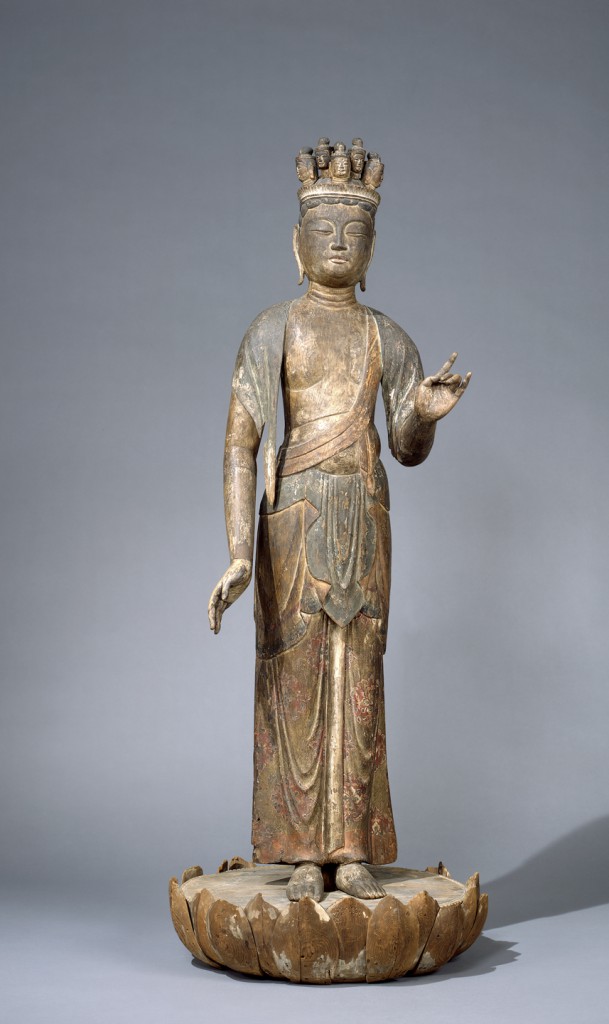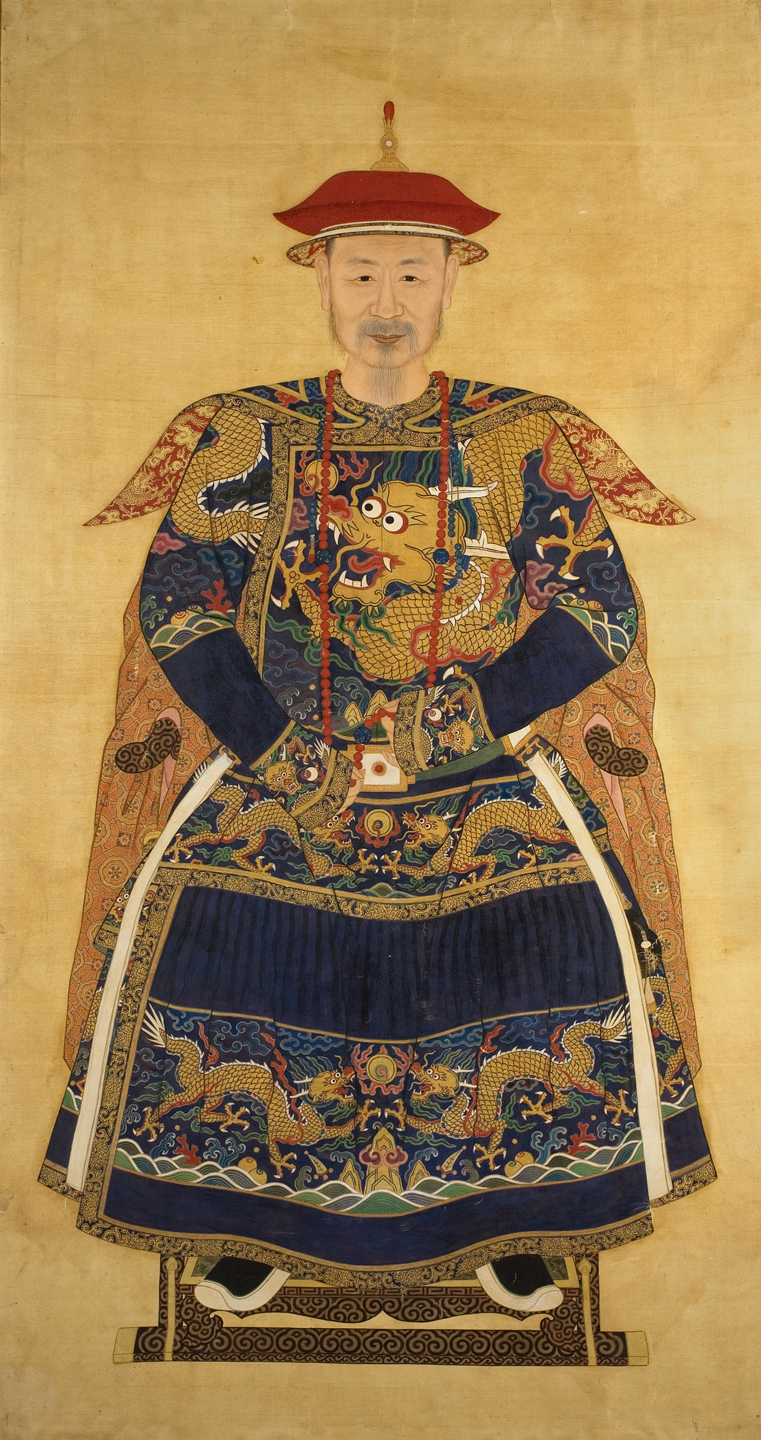Students will use visual critique skills to analyze and discuss the Eleven-Headed Bodhisattva of Compassion. They will then work in groups to create a multi-media assemblage work of art that visually conveys a chosen emotion.
Students will be able to:
- describe and analyze what they see in the Eleven-Headed Bodhisattva of Compassion;
- interpret meaning from symbolic uses of design elements;
- “read” and organize information gathered from an art object; and
- work collaboratively to assemble a work of art that uses visual literacy clues to convey meaning.
Lesson
- Show students the image of the Eleven-Headed Bodhisattva of Compassion. Go through the process of helping students to use critique skills to examine the work of art starting with description, then analysis, interpretation, and evaluation. Students should verbally communicate and defend reasons for opinions. You can ask questions such as: What do you see that makes you say that? Are there clues that can be used to guess at the artist’s intentions? Does this work of art appear to adhere to western ideals, or are their clues leading to a non-western origin? You may wish to do this with the whole class or in small groups that can then share what they uncover.
- Share the information from the About the Art section with students. Note that this object was probably made by a group of artists who assembled their individual parts to complete the sculpture.
- Ask students how the artists who created this work used certain elements to convey a meaning of compassion to the viewer. Think about the facial expression, the hand signals, and the symbols located throughout the work. Ask students if the artists could have done anything else to convey the feeling of compassion. If given the choice, would they add or change anything? What?
- Just as those who created this object worked in groups, the students will also work in small groups of around four to create a figure of a person that conveys a feeling or an emotion without the use of words. They could choose to convey compassion like the Eleven-Headed Bodhisattva of Compassion, or any other feeling.
- Just like this object was assembled, students should assemble the elements to complete this work of art. It could be an assemblage of magazine images, drawings, and photographs, or have painted elements, three-dimensional elements, or other media. It could also be done entirely in Photoshop if that is an option, with students piecing together images and manipulating them (changing colors, textures, etc.) to convey a certain emotion.
- After their projects are complete, have groups share their creations. See if viewers can correctly identify the emotion or feeling conveyed by only looking at the work. If you want to give students more time to work on their projects and present them, you can extend this lesson into a second class period.
Materials
- Sketch paper for each student
- Variety of pencils, markers, or other writing implements
- Variety of art supplies to create an assemblage such as, but not limited to: magazine images, glue, scissors, decorative and colored paper, colored pencils, markers, pastels, watercolor or tempera paint, etc.
- Computer access for image research or access to design programs such as Photoshop
- Paper to mount and display the completed work of art
- Color copies of the object for students to share, or the ability to project the image onto a wall or screen
- Copies of About the Art section on the Eleven-Headed Bodhisattva of Compassion (included with the lesson plan) or student access to this part of Creativity Resource online
Standards
- Visual Arts
- Invent and Discover to Create
- Observe and Learn to Comprehend
- Relate and Connect to Transfer
- Envision and Critique to Reflect
- Collaboration
- Critical Thinking & Reasoning
- Information Literacy
- Invention

Eleven-Headed Bodhisattva of Compassion
Artist not known, Japan
1100s, late Heian period
Height: 50 in. (including base)
Collector's Choice IV Benefit Fund, 1982.134
Photograph © Denver Art Museum 2009. All Rights Reserved.
This sculpture was most likely made by multiple artisans who were called busshi [BOO-shee] (Japanese sculptors of Buddhist images). It was made during Japan’s Heian period (794-1185 CE), an era characterized by a great flowering of literature, art, and religious thinking. During the Heian period, sculptures were made almost exclusively of wood. This sculpture was made in the yosegi [yoh-SEH-gee] fashion, a technique that involved carving several separate pieces of wood and assembling them to form the sculpture. After the pieces were assembled, the detailed carving would be finished. Often, each piece of wood was carved by a different artisan-specialist. This kind of assembly line production turned out more large-scale images than a single artisan could, and in a shorter amount of time. This sculpture was also painted with brilliant colors, but the paint has worn off over time, leaving the wood exposed in certain areas.
The word bodhisattva [boh-dee-SAHT-vah] means "one whose essence is enlightenment.” A bodhisattva is an important figure in the Buddhist religion. In Buddhism, all living beings take part in an ongoing cycle of birth, death, and rebirth, known as the Wheel of Life. All deeds, good or bad, are carried from past lives into future lives. This cycle continues until sufficient knowledge and spiritual experience leads to enlightenment, or nirvana [neer-VAH-nah]. A bodhisattva is a being who has achieved nirvana but, instead of passing out of the Wheel of Life, chooses to remain in the world to help others. Bodhisattvas exercise compassion by sharing the wisdom they have gained during their many past lives.
This sculpture is a representation of the Bodhisattva of Compassion (called Kannon [KAH-known] in Japanese), who was one of the most popular bodhisattvas in Heian Japan. The name Kannon means “the one who hears their cries.” Believers appeal to Kannon for help in achieving enlightenment and protection from disaster. This sculpture was an object of devotion, probably placed in a Buddhist temple complex where devotees could make offerings to the bodhisattva.
Details

Eleven Heads
There are thirty-two different forms of Kannon; this sculpture depicts the form called the Eleven-Headed Kannon. Only five of the eleven small heads remain on the top of the sculpture. The eleven heads are said to originate out of the despair that the bodhisattva felt at seeing countless individuals who had not found salvation. This grief caused his head to split into ten fragments which then formed into additional heads. The additional heads symbolize his awareness of the needs of all conscious beings—humans, animals, and insects.
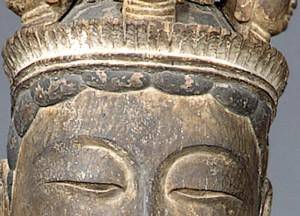
Crowns
Jeweled crowns are typical of bodhisattvas and suggest royal stature.
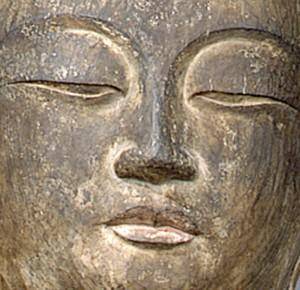
Caring Expression
The bodhisattva’s expression is meant to express gentleness or kindness. The eyes are almost closed and may convey a sense of calm.
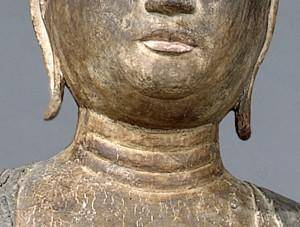
Aristocratic Body and Clothing
The proportions of this sculpture mirror the fashions of the upper class during the Heian Period. The padded hips, slightly bulging belly, full arms, rings of flesh on the neck, and long, pierced earlobes are all signs of wealth and nobility. Being thin as a sign of beauty is very much a creation of the modern world. In the past, in most cultures, beauty was associated with having plenty to eat and being a bit on the fleshy side.

Lotus Throne
The lotus plant symbolizes purity emerging from an imperfect world. Lotus flowers grow from the mud at the bottom of a pond and eventually bloom on top of clear water.
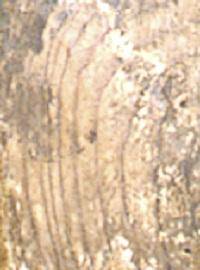
Wood Grain
Although the wood grain would not have been visible originally (it would have been hidden under brightly colored paint), its lines follow the forms of the face and body with precision.

Hand Gestures
These hand positions are called mudra [MOO-drah] and are a kind of hand-sign language. One hand is held down with palm open and the fingers gently cupped. The other hand is raised with thumb and middle finger together. These two hand gestures together might have suggested appeasement, or bringing peace and calmness to the world. However, it is possible the hands were replaced over the years, as hands are fragile and tend to break off of sculptures.
Funding for object education resources provided by a grant from the Morgridge Family Foundation. Additional funding provided by the William Randolph Hearst Endowment for Education Programs, and Xcel Energy Foundation. We thank our colleagues at the University of Denver Morgridge College of Education.
The images on this page are intended for classroom use only and may not be reproduced for other reasons without the permission of the Denver Art Museum. This object may not currently be on display at the museum.
